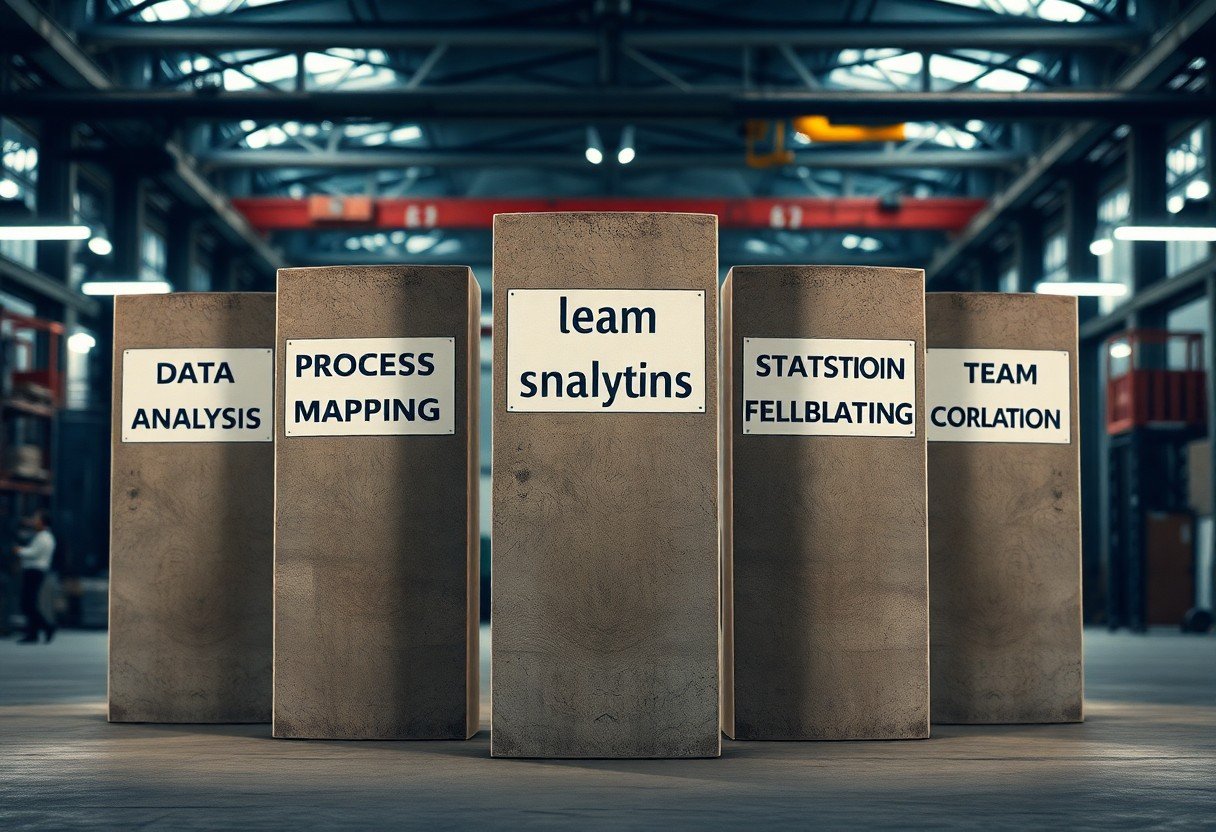Predictive Continuous Improvement (PCI) empowers you to enhance performance by anticipating issues before they arise. This approach is built upon six foundational pillars that guide your organization toward sustainable success. By understanding each pillar, you can implement effective strategies to drive innovation, optimize processes, and foster a culture of continuous improvement. Embracing these principles equips you with the tools necessary to proactively address challenges and seize opportunities for growth.
Key Takeaways:
- Focus on data-driven insights to enhance operational processes.
- Implement iterative improvements based on real-time feedback and analytics.
- Engage all levels of the organization in the continuous improvement journey.
Understanding Predictive Continuous Improvement
Grasping the concepts behind Predictive Continuous Improvement (PCI) allows you to transform your operational strategies. By leveraging data analytics and forecasting techniques, PCI empowers you to make informed decisions that drive efficiency and innovation. This proactive approach not only minimizes waste but also enhances overall productivity, positioning your organization for sustainable success.
Definition and Importance
Predictive Continuous Improvement refers to a systematic methodology that applies data-driven insights to anticipate potential challenges and opportunities for enhancement. This practice is vital as it enables you to move beyond reactive problem-solving, fostering a culture of proactive growth and adaptation that can significantly elevate your organization’s performance.
Key Concepts and Terminology
Familiarity with specific terms is vital for navigating Predictive Continuous Improvement. Key concepts include predictive analytics, performance metrics, and continuous feedback loops. These elements work together to help you identify trends, evaluate outcomes, and refine processes, ultimately driving deeper insights and better decision-making.
For instance, predictive analytics involves using historical data to build models that forecast future trends, while performance metrics quantify progress towards your goals. Continuous feedback loops facilitate real-time adjustments by integrating learner insights back into the process. Understanding these concepts empowers you to implement PCI effectively, ensuring that your initiatives are data-driven and responsive to changing circumstances.
The Six Pillars of PCI
The six pillars of Predictive Continuous Improvement create a robust framework that enhances your organization’s performance. Each pillar supports a specific element of improvement, ensuring a comprehensive approach to operational excellence. By leveraging these pillars, you can effectively drive enhancements and align processes with strategic goals.
Data-Driven Decision Making
Utilizing data-driven decision making leads to informed choices that enhance operational efficiency. You sift through vast amounts of data to extract actionable insights, guiding your improvement initiatives. This reliance on data minimizes guesswork and maximizes accuracy in evaluating performance and identifying areas for enhancement.
Automation and Technology Integration
Automation and technology integration streamline processes, enhancing productivity and reducing manual errors. By adopting tools such as robotic process automation (RPA) or advanced analytics, you minimize repetitive tasks, allowing your team to focus on strategic activities that drive improvement.
Integrating automation tools into your workflows can significantly enhance efficiency. For instance, implementing RPA in data entry tasks can reduce processing time by up to 80%. Embracing cloud technologies also ensures real-time access to data, enabling quicker responses to emerging trends and issues in your operations.
Continuous Feedback Mechanisms
Continuous feedback mechanisms ensure that your improvement efforts remain aligned with organizational goals. Collecting real-time input from stakeholders allows you to assess the effectiveness of initiatives and make necessary adjustments. This practice fosters a culture of transparency and accountability, leading to enhanced outcomes.
Establishing continuous feedback loops creates a dynamic environment for improvement. By utilizing surveys and performance metrics, you gain immediate insights into operational effectiveness. For example, implementing tools like Net Promoter Score (NPS) can provide customer satisfaction feedback, driving adjustments that improve service delivery and customer retention.
Cross-Functional Collaboration
Cross-functional collaboration encourages diverse perspectives, driving innovative solutions. Engaging members from different departments fosters knowledge sharing and enhances problem-solving capabilities. This collaborative spirit accelerates the implementation of effective improvement strategies tailored to comprehensive organizational needs.
Involving team members across various functions ensures that all relevant expertise contributes to improvement initiatives. For instance, a cross-functional team may include marketing, operations, and IT personnel who collaborate to enhance customer experiences, leading to a 25% increase in engagement. This approach leverages diverse insights, resulting in more holistic and effective solutions.
Agile Methodologies
Agile methodologies enable flexible, iterative approaches to project management. By adopting these methods, you can quickly adapt to changing requirements and continuously refine processes. This approach empowers your teams to respond promptly to feedback and enhances collaboration and efficiency.
Implementing agile methodologies transforms how you approach projects and improvements. Utilizing frameworks such as Scrum or Kanban promotes incremental progress through regular sprints and reviews. For example, teams using Scrum can release product updates every two weeks, enabling them to rapidly incorporate user feedback and improve performance iteratively, resulting in higher customer satisfaction over time.
Sustained Training and Development
Sustained training and development are necessary for continuous improvement. Investing in your team’s skills ensures they remain equipped to implement new processes and technologies effectively. Ongoing education fosters a culture of learning and adaptability, crucial for sustaining improvement efforts.
Effective training programs integrate hands-on learning and theoretical knowledge, ensuring your team can navigate evolving challenges. For instance, offering regular workshops on data analytics tools empowers your employees to leverage data insights more effectively. Companies that invest in continuous training see a 30% increase in employee productivity, illustrating the direct link between development efforts and operational success.
Implementing PCI in Organizations
Successful implementation of Predictive Continuous Improvement (PCI) requires a structured approach that integrates your organization’s processes, data, and culture. You begin by assessing current workflows and identifying gaps before establishing a tailored PCI framework that aligns with your objectives. Training and engaging your team in this process ensures collective ownership and accelerates the journey towards continuous improvement.
Assessing Current Processes
Start by conducting a thorough evaluation of your existing processes. Identify performance metrics, inefficiencies, and areas where predictive analytics can yield insights. Engaging with stakeholders can reveal blind spots and provide a holistic view of operations, setting the stage for impactful improvements.
Developing a PCI Framework
Develop a structured PCI framework that encompasses data collection, analysis, and iterative improvement cycles. This framework should align with your organization’s strategic goals, integrating tools and methodologies that enhance data-driven decision-making while fostering a culture of continuous learning.
Your PCI framework should incorporate specific elements such as a clear data governance model, robust analytics tools, and defined roles for team members. Consider case studies from similar organizations to adapt best practices that fit your unique context. Establish feedback loops to evaluate the effectiveness of changes and adjust based on real-time data, enabling swift responses to evolving challenges and maximizing operational efficiency.

Challenges and Solutions in PCI Implementation
Implementing Predictive Continuous Improvement (PCI) can reveal several challenges that hinder progress and effectiveness. Organizations often grapple with data silos, insufficient staff training, and resistance to change. These obstacles can lead to fragmented insights and a lack of alignment among team members, limiting your ability to leverage PCI fully for performance enhancement.
Common Obstacles
Data quality and accessibility pose significant challenges in PCI. You may encounter inconsistent data formats, outdated information, or inadequate integration across systems. Furthermore, a lack of skilled personnel familiar with analytical tools can create barriers to effectively implementing predictive models.
Strategies for Overcoming Challenges
Dismantling these obstacles requires proactive strategies. Focus on fostering a culture of collaboration and continuous learning within your teams. Providing targeted training on data analytics can empower your staff to embrace new technologies, while investing in robust data management systems ensures accessible, high-quality information.
Building a systematic approach involves establishing cross-functional teams to improve data sharing and communication across departments. Regular workshops can help demystify predictive analytics, encouraging a mindset shift. Begin with small pilot projects to demonstrate the value of PCI, leading to broader acceptance and integration. Overall, embedding these strategies into your operational framework will enhance your readiness to exploit Predictive Continuous Improvement effectively, paving the way for sustained business success.
Case Studies: Successful PCI Applications
Manufacturing Excellence
In a notable case, a leading manufacturer implemented PCI strategies that led to a 30% reduction in waste during production. By utilizing predictive analytics, they optimized resource allocation, improving overall efficiency.
Healthcare Transformation
A healthcare provider adopted PCI principles, resulting in a 25% decrease in patient wait times. By analyzing data trends, they adjusted staffing schedules, enhancing patient flow and satisfaction.
Energy Sector Innovations
Transitioning to PCI allowed an energy firm to reduce downtime by 40%. Predictive maintenance alerts prevented major equipment failures, saving the company millions in potential revenue loss.
Retail Growth
Implementing PCI in a retail chain improved inventory turnover by 15%. Real-time analytics informed supply chain decisions and reduced stock-outs, thus boosting sales performance.
- 30% reduction in manufacturing waste.
- 25% decrease in patient wait times in healthcare.
- 40% reduction in downtime for energy production.
- 15% improvement in inventory turnover for retail.
For further insights into effective strategies, refer to The Six Pillars of A Predictive Maintenance Program.
To wrap up
From above, you can see how the Six Pillars of Predictive Continuous Improvement (PCI) provide a structured approach to enhancing your processes. By embracing data-driven insights, fostering collaboration, and prioritizing adaptability, you enable your organization to thrive in a competitive landscape. As you implement these pillars, you enhance your capability to anticipate challenges, improve efficiency, and drive sustainable results, ultimately positioning yourself as a leader in your field.
FAQ
Q: What are the Six Pillars of Predictive Continuous Improvement (PCI)?
A: The Six Pillars of PCI are: 1) Data Collection and Analysis, 2) Predictive Analytics, 3) Process Optimization, 4) Performance Metrics, 5) Continuous Feedback Loops, and 6) Change Management. Each pillar supports organizations in enhancing performance and efficiency through data-driven decision-making.
Q: How does predictive analytics contribute to the PCI framework?
A: Predictive analytics helps identify trends and patterns in historical data, allowing organizations to anticipate future performance and potential issues. This foresight enables proactive adjustments to processes, improving overall efficiency and reducing risks associated with unforeseen challenges.
Q: Why is continuous feedback important in the PCI model?
A: Continuous feedback is important as it fosters ongoing communication between teams and processes. It allows for real-time adjustments based on performance metrics and user inputs, ensuring that the improvement strategies remain relevant and effective over time.

No responses yet